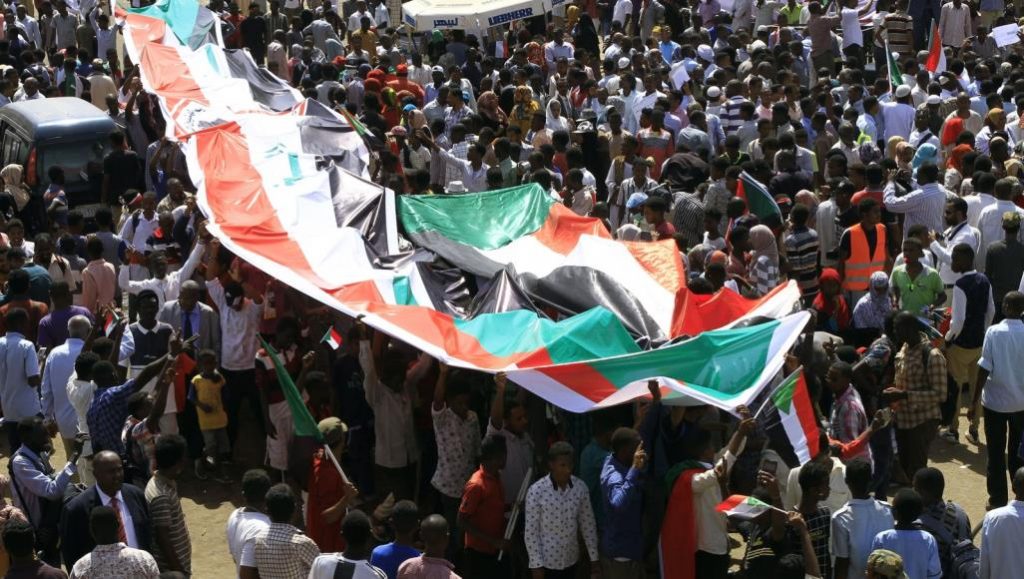The Sudanese December 2019 Revolution marked a turning point in the country’s modern history, overthrowing the regime of ousted President Omar al-Bashir, who ruled Sudan for over three decades.
Despite its major success and the inspirational example set by peaceful protesters, which amazed the world by shaking one of Africa’s most entrenched dictatorships, the revolution failed to follow the expected path toward genuine democratic transformation.
Mashawir spoke with various actors and groups closely linked to the revolution—including politicians, analysts, protesters, and Kandakas (female revolutionaries)—to answer this crucial question: Was the December Revolution truly lost? If so, who lost it, how, and why?
Unmet Goals
Political analyst Ahmed Babiker states:
“First, we need to reframe some terms. What happened was an uprising with deeply revolutionary aims. Some people think that taking to the streets is in itself a revolution, but revolution is a broader concept—it means change, whether political, social, economic, or administrative. In the end, revolution means fundamental transformation. So as long as this change hasn’t occurred, it remains an uprising.”
He adds:
“If we take the question ‘Who lost the December Revolution?’ from the standpoint that it was a revolution, then I would argue it hasn’t been lost. The revolution set forth demands that are still valid today. The struggle continues, even if it has diminished in form. This leads us to those responsible for disrupting the process of change.”
Babiker continues:
“Many accuse civilian forces of losing the revolution and betraying the blood of the martyrs. But in my view, the real reason behind the stalled democratic transition lies with the coup by Burhan and Hemedti, backed by a coalition of interests within the Islamic Movement. They derailed the democratic transition. The demands for change still exist, and the conditions are largely in place. Even if one or two conditions are missing, others will eventually be met—because change is a necessity, not just a political desire. We cannot continue living under a 30-year-old system that destroyed everything—regardless of war, secession, and corruption.”
He concluded:
“This situation cannot persist. The coup was a conspiracy against democratic transformation.”
Conspiracy from Multiple Sides
Abla Karrar, a leader in the Forces of Freedom and Change (FFC), said:
“I don’t believe that the glorious December Revolution was lost. But there have been persistent efforts to kill it. Several actors have tried to crush it—foremost among them, the defunct regime and the deep state that the revolution itself overthrew. This includes the National Congress Party, which ruled Sudan for 30 years.”
She added:
“These efforts began early, with the June 3 massacre at the sit-in, aimed at preventing any agreements among revolutionary forces during the early transitional period. When that failed, the sit-in was violently dispersed. The defunct regime, still entrenched in state institutions, continued to undermine the transition—creating commodity shortages, inciting ethnic divisions such as in Eastern Sudan, and sabotaging the process with infiltrators posing as protesters.”
Karrar went on:
“The military leadership was incited to carry out a coup, heavily influenced by Islamist elements. They succeeded in persuading the army leadership to overthrow civilian rule. However, resistance to the coup was strong.”
She concluded:
“The failure of Burhan and Hemedti to align ultimately contributed to the coup’s failure. But the military leadership bears great responsibility for betraying the revolution, pursuing personal power, and competing for control, which ultimately led to the outbreak of war. The defunct regime is the primary culprit in the revolution’s failure, while the military leaders who carried out the coup and ignited the war bear secondary responsibility. The aim of the war was to crush any remaining hope of restoring civilian rule.”
Conflicts and Crises
Nada Hashim, a human rights and women’s rights activist, said:
“The revolution was lost the moment the sit-in was dispersed, because it failed to achieve its goals.”
She added:
“We took to the streets for democracy, peace, freedom, and justice, but unfortunately, none of these demands materialized. The revolution failed due to power struggles and greed for positions among both political and military elites.”
She continued:
“We, as politicians, lacked a clear vision for properly managing the transitional period. All efforts failed because certain political parties were leading protests during the transition instead of calling for reform.”
Hashim concluded:
“All these factors combined paved the way for Islamists to return with force.”
